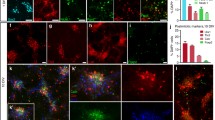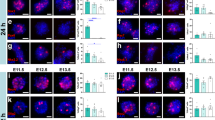Summary
Fetal spinal cord transplants placed into the site of a neonatal spinal cord lesion alter the response of immature CNS neurons to injury. The transplants prevent the retrograde cell death of immature axotomized neurons and support the growth of axons into and through the site of injury. In the present experiments we used a battery of locomotor tasks to determine if these transplants are also capable of promoting the recovery of motor function after spinal cord injury at birth. Embryonic (E14) spinal cord transplants were placed into the site of a spinal cord “over-hemisection” in rat pups. Three groups of animals were used: 1) normal control animals, 2) animals with a spinal cord hemisection only, and 3) animals with a spinal cord transplant at the site of the hemisection. Eight to twelve weeks later, the animals were trained and videotaped while crossing runways requiring accurate foot placement and footprinted while walking on a treadmill. The videotapes and footprints were analyzed to obtain quantitative measures of locomotor function. Footprint analysis revealed that the animals' base of support during locomotion was increased by a neonatal hemisection. The base of support in animals with transplants was similar to control values. Animals with a hemisection rotated their hindlimbs further laterally than did control animals during locomotion. A transplant at the site of injury modified this response. Normal animals were able to cross a grid runway quickly with only a few errors. In contrast, animals with a hemisection took a longer time and made more errors while crossing. The presence of a transplant at the site of injury enabled the animals to cross the grid more quickly and to make fewer errors than the animals with a hemisection only. Animals that received the transplants demonstrated qualitative and quantitative improvements in several parameters of locomotion. Spinal cord transplants at the site of neonatal spinal cord injury result in enhanced sparing or recovery of motor function. We suggest that this transplant induced recovery of function is a consequence of the anatomical plasticity elicited by the transplants.
Similar content being viewed by others
References
Arendash GW, Gorski RA (1982) Enhancement of sexual behavior in female rats by neonatal transplantation of brain tissue from males. Science 217:1276–1278
Barbeau H, Rossignol S (1987) Recovery of locomotion after chronic spinalization in the adult cat. Brain Res 412:84–95
Bernstein R, Stelzner D (1983) Plasticity of the corticospinal tract following midthoracic spinal injury in the postnatal rat. J Comp Neurol 221:382–400
Björklund A, Lindval O, Isacson O, Brundin P, Wictorin K, Strecker R, Clarke DJ, Dunnett SB (1987) Mechanisms of action of intracerebral neural implants: studies on nigral and striatal grafts to the lesioned striatum. TINS 10:509–516
Björklund A, Stenevi U (1984) Intracerebral neural implants: neuronal replacement and reconstruction of damaged circuitries. Ann Rev Neurosci 7:279–308
Bregman BS (1987a) Development of serotonin immunoreactivity and its plasticity after neonatal spinal cord lesions. Dev Brain Res 34:245–263
Bregman BS (1987b) Spinal cord transplants permit the growth of serotonergic axons across the site of neonatal spinal cord Iransection. Dev Brain Res 34:265–279
Bregman BS, Goldberger ME (1982) Anatomical plasticity and sparing of function after spinal cord damage in neonatal cats. Science 217:553–555
Bregman BS, Goldberger ME (1983a) Infant lesion effect. I. Development of motor behavior following neonatal spinal cord damage in cats. Dev Brain Res 9:1–15
Bregman BS, Goldberger ME (1983b) Infant lesion effect. II. Sparing and recovery of function after spinal cord damage in newborn and adult cats. Dev Brain Res 9:16–30
Bregman BS, Goldberger ME (1983c) Infant lesion effect. III. Anatomical correlates of sparing and recovery of function after spinal cord damage in newborn and adult cats. Dev Brain Res 9:137–154
Bregman BS, Kunkel-Bagden E, McAtee M, O'Neill A (1989) Extension of the critical period for developmental plasticity of the corticospinal pathway. J Comp Neurol 282:355–370
Bregman BS, Reier PJ (1986) Neural tissue transplants rescue rubrospinal neurons after neonatal axotomy. J Comp Neurol 244:86–95
Brown M, Goldberger ME (1989) Conference proceedings “Criteria for assessing recovery of function: behavioral methods”. American Paralysis Association Springfield NJ
Buchanan J, Nornes HO (1986) Transplants of embryonic brainstem containing the locus coeruleus into spinal cord enhance the hindlimb flexion reflex in adult rats. Brain Res 381:225–236
de Medinacelli L, Freed WJ, Wyatt RJ (1982) An index of the functional condition of rat sciatic nerve based on measurements made from walking tracks. Exp Neurol 77:634–643
Donatelle JM (1977) Growth of the corticospinal tract and the development of placing reactions in the postnatal rat. J Comp Neurol 175:207–232
Dunnett SB, Ryan CN, Lewin PD, Reynolds M, Bunch T (1987a) Functional consequences of embryonic neocortex transplanted to rats with prefrontal cortex lesions. Behav Neurosci 101:489–503
Dunnett SB, Toniolo G, Fine A, Ryan CN, Björklund A, Iversen SD (1985) Transplantation of embryonic ventral forebrain neurons to the neocortex of rats with lesions of nucleus basalis magnocellularis. II. Sensorimotor and learning impairments. Neuroscience 16:787–797
Dunnett SB, Whishaw IQ, Rogers DC, Jones GH (1987b) Dopamine-rich grafts ameliorate whole body motor asymmetry and sensory neglect but not independent limb use in rats with 6-hydroxydopamine lesions. Brain Res 415:63–78
Freed WJ, Morihisa JM, Spoor E, Hoffer BJ, Olson L, Seiger A, Wyatt RJ (1981) Transplanted adrenal chromaffin cells in the rat brain reduce lesion-induced rotational behavior. Nature 292:351–352
Foster GA, Schultzberg M, Gage FH, Björklund A, Hökfelt T, Nornes H, Cuello AC, Verhofstad AAJ, Visser TJ (1985) Transmitter expression and morphological development of embryonic medullary and mesencephalic raphe neurones after transplantation to the adult rat central nervous system. Exp Brain Res 60:427–444
Gash D, Sladek JR, Sladek CD (1980) Functional development of grafted vasopressin neurons. Science 210:1367–1369
Gibson MJ, Charlton HM, Perlow MJ, Simmerman FA, Davies TF, Krieger DT (1984) Preoptic area brain grafts in hypogonadal (hpg) female mice abolish effects of congenital hypothalamic gonadotropin-releasing hormone (GnRH) deficiency. Endocrinology 114:1938–1940
Goldberger ME (1988a) Spared-root deafferentation of a cat's hindlimb: hierarchical regulation of pathways mediating recovery of motor behavior. Exp Brain Res 73:329–342
Goldberger ME (1988b) Partial and complete deafferentation of cat hindlimb: the contribution of behavioral substitution to recovery of motor function. Exp Brain Res 73:343–353
Grillner S (1975) Locomotion in vertebrates: central mechanisms and reflex interaction. Physiol Rev 55:247–304
Haun F, Cunningham TJ (1984) Cortical transplants reveal CNS trophic interactions in situ. Dev Brain Res 15:290–294
Haun F, Cunningham TJ, Rothblat LA (1989) Neurotrophic and behavioral effects of occipital cortex transplants in newborn rats. Vis Neurosci 2:189–198
Houle J, Reier PJ (1988) Transplantation of fetal spinal cord tissue into the chronically injured adult rat spinal cord. J Comp Neurol 269:535–547
Kesslak JP, Nieto-Sampedro M, Globus J, Cotman CW (1986) Transplants of purified astrocytes promote behavioral recovery after frontal cortex ablation. Exp Neurol 92:377–390
Martin JH, Ghez C (1988) Red nucleus and motor cortex: parallel motor systems for the initiation and control of skilled movement. Behav Brain Res 28:217–223
McLoon LK, McLoon S, Change FE, Steedman JG, Lund RD (1985) Visual system transplanted to the brain of rats. In: Björklund A, Stenevi U (eds) Neural grafting in the mammalian CNS. Elsevier, Amsterdam New York Oxford, pp 267–283
Nornes H, Björklund A, Stenevi U (1983) Reinnervation of the denervated adult spinal cord of rats by intraspinal transplants of embryonic brain stem neurons. Cell Tissue Res 230:15–35
Nygren L-G, Olson L, Seiger A (1977) Monoaminergic reinnervation of the transected spinal cord by homologous fetal brain grafts. Brain Res 129:227–235
Nygren L, Olson L (1977) A new major projection from locus coeruleus: the main source of noradrenergic nerve terminals in the ventral and dorsal columns of spinal cord. Brain Res 132:85–93
Privat A, Mansour H, Pavy A, Geffard M, Sandillon F (1986) Transplantation of dissociated foetal serotonin neurons into the transected spinal cord of adult rats. Neurosci Lett 66:61–66
Privat A, Mansour H, Geffard M (1988) Transplantation of fetal serotonin neurons into the transected spinal cord of adult rats: morphological development and functional influence. In: Gash DM, Sladek JR (eds) Transplantation into the mammalian CNS. Elsevier, Amsterdam New York Oxford, pp 155–166
Reier PJ, Bregman BS, Wujek JR (1986) Intraspinal transplantation of embryonic spinal cord tissue in neonatal and adult rats. J Comp Neurol 247:275–296
Richardson PM, McGuinness UM, Aguayo AJ (1980) Axons from CNS neurones regenerate into PNS grafts. Nature 284:264–265
Richardson PM, McGuinness UM, Aguayo AJ (1982) Peripheral nerve autografts to the rat spinal cord: studies with axonal tracing methods. Brain Res 237:147–162
Rivlin AS, Tator CH (1977) Objective clinical assessment of motor function after experimental spinal cord injury in the rat. J Neurosurg 47:577–581
Schreyer K, Jones EG (1982) Growth and target finding by axons of the corticospinal tract in prenatal and postnatal rats. Neuroscience 7:1837–1854
Sotelo C, Alvardo-Mallart RM (1987) Reconstruction of the defective cerebellar circuitry in adult purkinje cell degeneration mutant mice by purkinje cell replacement through transplantation of solid embryonic implants. Neuroscience 20:1–22
Tarlov IM (1957) Spinal cord compression: mechanism of paralysis and treatment. Charles C. Thomas, Springfield IL
Westlund KW, Bowker RM, Ziegler MG, Coulter JD (1983) Noradrenergic projections to the spinal cord of the rat. Brain Res 263:15–31
Author information
Authors and Affiliations
Rights and permissions
About this article
Cite this article
Kunkel-Bagden, E., Bregman, B.S. Spinal cord transplants enhance the recovery of locomotor function after spinal cord injury at birth. Exp Brain Res 81, 25–34 (1990). https://doi.org/10.1007/BF00230097
Received:
Accepted:
Issue Date:
DOI: https://doi.org/10.1007/BF00230097




